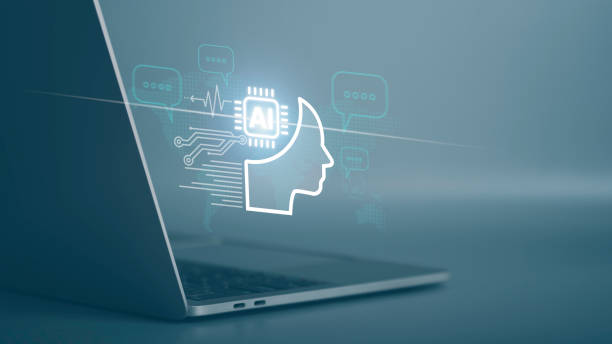What is an AI Robot and How Does it Work?
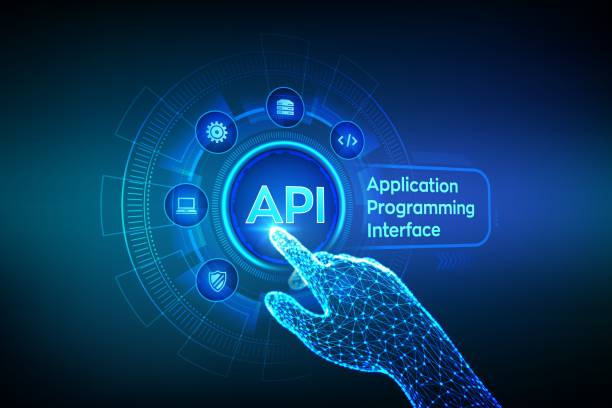
An #AI_robot is a combination of two distinct fields: robotics and artificial intelligence (AI).
Simply put, an AI robot is a physical or software device capable of performing tasks that typically require human intelligence.
These tasks can include learning, reasoning, problem-solving, understanding natural language, and interacting with the surrounding environment.
An AI robot is essentially a machine that uses #machine_learning algorithms and #neural_networks to identify patterns, learn from data, and make intelligent decisions.
The operation of an AI robot typically involves the following steps: receiving information from the environment through sensors (such as cameras, microphones, and touch sensors).
Processing the received information using AI algorithms.
Making decisions based on the processed information.
Performing appropriate actions through actuators (such as motors, robotic arms, and displays).
Meanwhile, continuous learning from experiences plays an important role in improving the AI robot’s performance.
For example, an AI robot in a factory can be used for quality control of products, sorting parts, or performing hazardous tasks.
An #AI_robot in a hospital can be used to assist surgeons in complex operations, care for patients, or administer medication.
At home, an AI robot can be used for cleaning, caring for the elderly, or entertaining children.
Are you frustrated with your online store’s low conversion rate?
Rasawweb, with its professional e-commerce website design, is your definitive solution!
✅ Increase your sales and revenue
✅ Unparalleled user experience for your customers
⚡ Get a free consultation now!
Main Components of an AI Robot
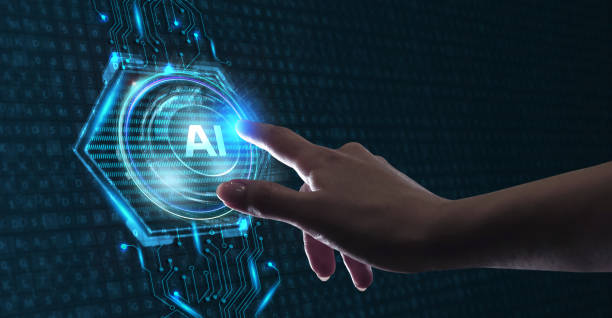
An AI robot consists of several main components that work together to enable the performance of intelligent tasks.
These components include:
Sensors: Sensors collect information about the surrounding environment.
This information can include images, sounds, temperature, pressure, or other sensory data.
Processor: The processor processes the information collected by the sensors.
The processor is responsible for executing AI algorithms and making decisions about how to respond to the received information.
Actuators: Actuators perform physical tasks.
These tasks can include movement, grasping objects, speaking, or displaying information.
Software: Software includes AI algorithms that control the robot’s behavior.
These algorithms are responsible for learning, reasoning, problem-solving, and interacting with the environment.
Power Source: The power source provides the necessary energy for the robot’s components to function.
In summary, an #AI_robot is a complex machine that, through the combination of sensors, a processor, actuators, and software, is capable of understanding its surroundings, making decisions, and performing intelligent tasks.
The development and improvement of each of these components play a significant role in enhancing the performance and efficiency of AI robots.
Types of AI Robots and Their Applications

AI robots are categorized into various types based on their application and capabilities.
Some of the most common types of AI robots include:
Industrial Robots: These robots are used for repetitive and hazardous tasks in industrial environments.
They can be employed for welding, painting, assembling parts, and quality control of products.
Service Robots: These robots are designed to provide services to humans in various environments.
They can be used for cleaning, delivering goods, caring for the elderly, or providing information to customers.
Medical Robots: These robots are employed to assist doctors and nurses in performing surgeries, caring for patients, or administering medication.
Military Robots: These robots are used for dangerous or impossible tasks for humans in military environments.
They can be employed for identifying and neutralizing mines, gathering information, or performing offensive operations.
Educational Robots: These robots are used to teach various concepts to students.
They can be employed for teaching programming, mathematics, or experimental sciences.
AI robots also have extensive applications in the field of artificial intelligence.
The use of #AI_robots in daily life is increasing, and it is expected that in the near future, we will witness their more prominent presence in various industries and our personal lives.
| Robot Type | Application |
|---|---|
| Industrial Robot | Welding, Painting, Assembly |
| Service Robot | Cleaning, Goods Delivery, Care |
Advantages and Disadvantages of Using AI Robots

The use of #AI_robots has many advantages, but also comes with disadvantages.
Some of the most important advantages include:
Increased Productivity: AI robots can perform tasks with greater speed and accuracy than humans.
Cost Reduction: AI robots can reduce labor costs.
Improved Safety: AI robots can perform dangerous tasks without endangering human lives.
Enhanced Quality: AI robots can perform tasks with greater precision and prevent errors.
Some of the disadvantages of using AI robots include:
High Initial Cost: Purchasing and installing AI robots can be expensive.
Need for Expertise: Special expertise is required for the setup and maintenance of AI robots.
Job Displacement: The use of AI robots can lead to job losses for humans.
Ethical Issues: The use of AI robots can raise various ethical concerns.
Despite the mentioned disadvantages, the advantages of using AI robots generally outweigh them, and it is expected that in the near future, we will witness the increasing widespread use of this technology in various industries.
How much does losing business leads due to an unprofessional website cost you? Solve this problem forever with professional corporate website design by Rasawweb!
✅ Increase credibility and trust among potential customers
✅ Easier acquisition of new business leads
⚡ Get a free consultation now!
Challenges in Developing AI Robots

The development of #AI_robots faces numerous challenges.
Some of the most important of these challenges include:
Technical Issues: Developing AI algorithms that can effectively interact with the environment is a difficult task.
Additionally, building sensors and actuators that can collect and process accurate and reliable information requires advanced technology.
Ethical Concerns: The use of AI robots can raise various ethical issues.
For example, who is responsible for a robot’s actions? Should robots have rights?
Security Concerns: AI robots can be exploited.
For example, hackers can hack robots and use them for malicious purposes.
High Costs: The development and deployment of AI robots can be expensive.
This can hinder the widespread adoption of this technology in various industries.
Overcoming these challenges requires the efforts and cooperation of researchers, engineers, policymakers, and the public.
By solving these challenges, we can fully benefit from the advantages of #AI_robots and prevent their potential risks.
The Future of AI Robots
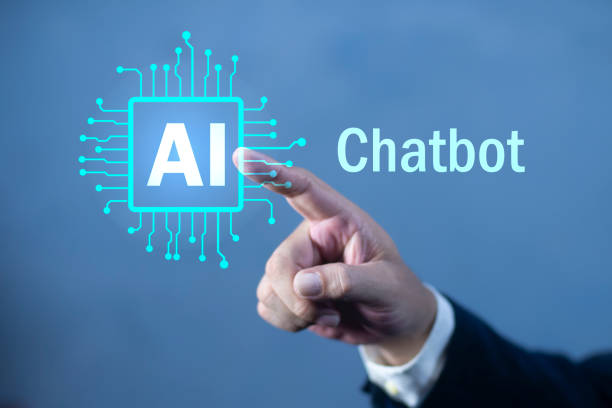
The future of #AI_robots appears very bright.
With advancements in technology, AI robots are expected to become capable of performing more complex tasks and play a more prominent role in various industries and our personal lives.
Expanded Applications: AI robots are expected to be used in various industries in the future, such as manufacturing, services, healthcare, education, and transportation.
Improved Performance: AI robots are expected to be able to perform their tasks with greater speed, accuracy, and efficiency in the future.
Cost Reduction: The cost of developing and deploying AI robots is expected to decrease in the future.
Increased Interaction: AI robots are expected to be able to interact better and more naturally with humans in the future.
#AI_robots have the potential to bring about significant transformations in our lives.
By developing and correctly utilizing this technology, we can create a better and more efficient world for ourselves and future generations.
Ethical Considerations in Designing and Using AI Robots
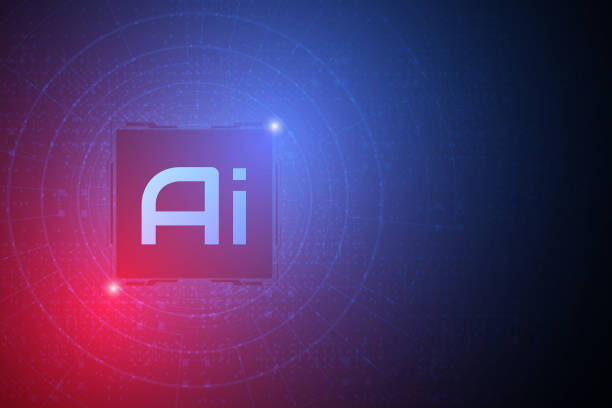
With the increasing widespread use of #AI_robots, attention to ethical considerations in their design and use becomes particularly important.
Some of the most important of these considerations include:
Accountability: In the event of an error or damage caused by a robot, who will be responsible? The designer, manufacturer, user, or the robot itself? Determining accountability for robot actions is a significant challenge.
Privacy: Robots can collect a lot of information about us.
How can individuals’ privacy be protected from the collection and misuse of this information?
Justice: Do robots treat all individuals fairly? How can discrimination in AI algorithms be prevented?
Transparency: How can robot performance be made transparent and understandable? Should users be allowed to examine AI algorithms?
Adhering to these ethical considerations in the design and use of #AI_robots is essential to ensure the responsible and safe use of this technology.
| Ethical Consideration | Description |
|---|---|
| Accountability | Determining responsibility for robot actions |
| Privacy | Protecting personal information collected by the robot |
The Role of AI Robots in Various Industries
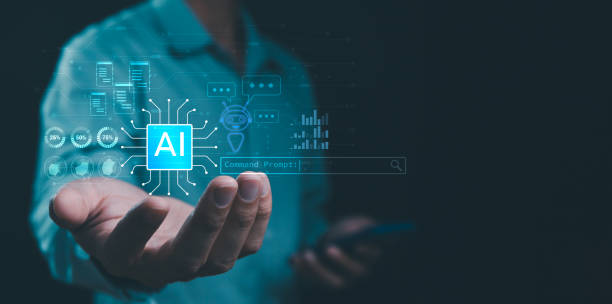
AI robots currently play a significant role in various industries, and this role is expected to become more prominent in the future.
Some of these industries include:
Manufacturing: AI robots are used in factories for repetitive, hazardous, or high-precision tasks.
They can be employed for welding, painting, assembling parts, and quality control of products.
Services: AI robots in the service industry are used to provide customer services.
They can be employed for cleaning, delivering goods, caring for the elderly, or providing information to customers.
Healthcare: AI robots in the healthcare industry are used to assist doctors and nurses in performing surgeries, caring for patients, or administering medication.
Additionally, #AI_robots are being developed in the field of AI robots for the healthcare industry.
Education: AI robots in the education industry are used to teach various concepts to students.
They can be employed for teaching programming, mathematics, or experimental sciences.
Transportation: AI robots in the transportation industry are used for driving vehicles, flying aircraft, or managing traffic.
#AI_robots with various capabilities are revolutionizing different industries.
Are you frustrated with your online store’s low conversion rate?
Rasawweb, with its professional e-commerce website design, is your definitive solution!
✅ Increase your sales and revenue
✅ Unparalleled user experience for your customers
⚡ Get a free consultation now!
Training and Skills Required for Working with AI Robots
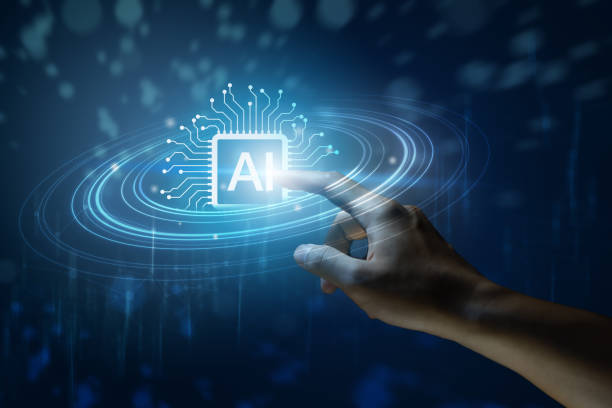
With the increasing use of AI robots, the demand for specialists capable of designing, building, deploying, and maintaining these robots is growing.
Some of the most important training and skills required for working with AI robots include:
Robotics Engineering: Robotics engineering deals with the design, construction, and deployment of robots.
Robotics engineers must have sufficient knowledge in mechanics, electronics, computer science, and control systems.
Artificial Intelligence: Artificial intelligence focuses on developing algorithms that enable robots to learn, reason, and solve problems.
AI specialists must have sufficient knowledge in machine learning, neural networks, and natural language processing.
Programming: Programming is essential for controlling robot behavior.
Robot programmers must be proficient in programming languages such as Python, C++, and Java.
Mathematics and Statistics: Mathematics and statistics are essential for developing AI algorithms and analyzing data.
Problem-Solving Skills: The ability to solve complex problems and provide creative solutions is crucial for working with #AI_robots.
Acquiring these training and skills helps individuals succeed in the #AI_robot job market and play an effective role in the development and advancement of this technology.
You can search online for more information about smart robots in industry.
AI Robots and Their Impact on the Job Market

The widespread use of #AI_robots will have significant impacts on the job market.
Some of these impacts include:
Job Displacement: #AI_robots are capable of performing many repetitive and simple tasks, which can lead to the displacement of some jobs.
Jobs requiring low and repetitive skills are most at risk.
Creation of New Jobs: At the same time, #AI_robots can also lead to the creation of new jobs.
For example, the demand for specialists capable of designing, building, deploying, and maintaining robots will increase.
Transformation of Job Nature: Many jobs will also change their nature.
Employees will need to learn new skills to collaborate with robots and perform more complex tasks.
Increased Productivity: The use of robots can lead to increased productivity in many industries.
This can result in increased profitability for companies and improved economic conditions.
Need for Retraining: To adapt to changes in the job market, many employees will need retraining to acquire the necessary skills for working with #AI_robots.
To prepare for these changes, individuals must continuously update their skills and seek to acquire new ones.
Investing in education and skill development will play a crucial role in individuals’ success in the future job market.
Frequently Asked Questions
| Question | Answer |
|---|---|
| What is an AI robot? | It is a robot that uses artificial intelligence capabilities for environmental understanding, reasoning, learning, and decision-making to perform complex tasks independently. |
| What is the main difference between a regular robot and an AI robot? | AI robots can learn and adapt to their environment, while regular robots typically operate based on fixed and predetermined programming. |
| In what areas are AI robots used? | In fields such as industry (production lines), medicine (robotic surgeries), services (customer support, smart vacuum cleaners), exploration (space and underwater), and entertainment. |
| How do AI robots learn? | They acquire new skills by analyzing large data and identifying patterns through Machine Learning and Deep Learning algorithms. |
| Can AI robots have emotions? | Currently, no. They can identify or simulate emotions, but they do not experience actual emotions like humans. |
| What are the most important advantages of using AI robots? | Increased productivity, reduction of human error, performance of dangerous or repetitive tasks, and provision of innovative and efficient services. |
| What challenges exist in the development of AI robots? | The need for abundant and high-quality data, algorithmic complexity, ethical issues, cybersecurity, and high research and development costs. |
| Are AI robots dangerous to humans? | With adherence to safe design principles and ethical regulations, no. Concerns are mostly related to social and economic impacts, such as changes in the job market. |
| What is an example of an AI robot in daily life? | Smart vacuum cleaner robots (like Roomba) that automatically map and clean homes, or smart voice assistants (like Siri and Alexa). |
| How is the future of AI robots predicted? | They are expected to become smarter, more autonomous, and capable of more complex interactions with humans, playing a more prominent role in industry, medicine, transportation, and daily life. |
And other advertising services by Rasawweb Advertising Agency
- Smart Digital Advertising: A fast and efficient solution for analyzing customer behavior with a focus on attractive user interface design.
- Smart Conversion Rate Optimization: An innovative service for increasing online growth through SEO-driven content strategy.
- Smart Content Strategy: An innovative service for increasing user engagement through the use of real data.
- Smart Direct Marketing: A fast and efficient solution for customer acquisition with a focus on intelligent data analysis.
- Smart Custom Software: A fast and efficient solution for improving SEO ranking with a focus on SEO-driven content strategy.
And over hundreds of other services in internet advertising, advertising consultation, and organizational solutions
Internet Advertising | Advertising Strategy | Advertorials
Sources
Applications of AI Robots in IndustryComprehensive Guide to AI and Its FutureThe Role of AI in Our Daily LivesLatest Developments and News in AI
? For your business to be seen and grow in the digital world, Rasawweb Afarin is your best companion. From professional WordPress website design to search engine optimization (SEO) and intelligent social media management, we provide everything your online presence needs to shine with high expertise and experience. Let your business powerfully shine on the web and achieve its noble goals.
📍 Tehran, Mirdamad Street, next to Bank Markazi, Southern Kazerun Alley, Ramin Alley, No. 6

